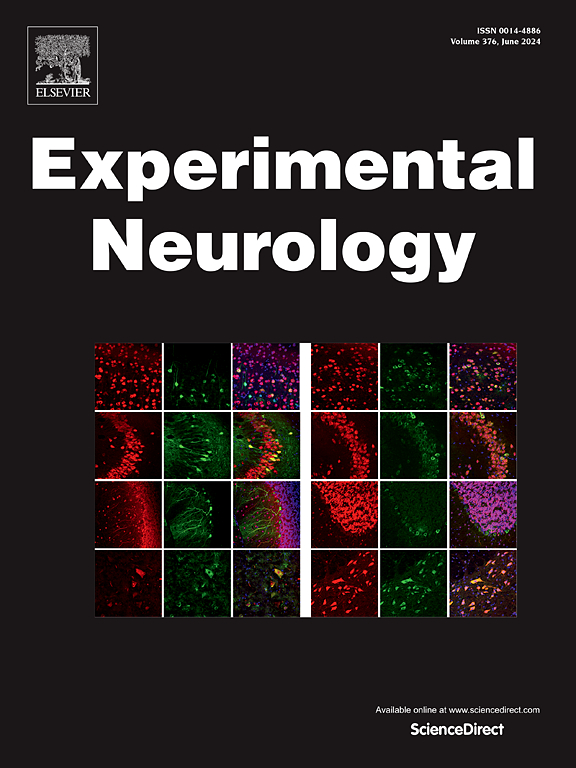努西那生治疗成人脊髓性肌萎缩症的功能改善机制。
IF 4.6
2区 医学
Q1 NEUROSCIENCES
引用次数: 0
摘要
本文章由计算机程序翻译,如有差异,请以英文原文为准。
Mechanisms of functional improvement behind nusinersen treatment in adult spinal muscular atrophy
Nusinersen treatment not only prevents neurological deterioration in presymptomatic or early symptomatic children with spinal muscular atrophy (SMA) but promotes functional improvement in the later plateau phase in adults with SMA, though the mechanisms for such functional improvement are not fully understood. We evaluated the motor behaviors and electrophysiological performance of 10 consecutive adult patients with SMA before and 2, 6, 10 months after nusinersen treatment. Adult SMA mice (Smn−/−SMN2+/+) were treated with nusinersen intracerebroventricularly for 2 months with analysis of the SMN transcripts and proteins expression, motor function, electrophysiology, and pathology of spinal cord and muscles. SMA patients showed motor function improvement in 10 months after nusinersen treatment with an increase in compound muscle action potential (CMAP) amplitude and motor unit number estimation (MUNE). Nusinersen augmented the expression of full-length SMN transcripts and proteins in SMA mice. SMA mice receiving nusinersen treatment showed a motor behavioral improvement with an increase in MUNE. Although nusinersen treatment partially prevented spinal motor neuron death, there was no obvious elevation in motor neuron density despite an increase in MUNE, indicating the reactivation of quiescent motor neurons. Nusinersen treatment not only eliminated progressive denervation at the neuromuscular junction (NMJ), but also promoted NMJ innervation, implying the existence of reinnervation. The functional improvements observed with nusinersen treatment in adults with SMA during the later plateau phase primarily result from two mechanisms: the revival of live but functionless motor neurons and the reinnervation of NMJs through axonal sprouting and the formation of new motor units.
求助全文
通过发布文献求助,成功后即可免费获取论文全文。
去求助
来源期刊

Experimental Neurology
医学-神经科学
CiteScore
10.10
自引率
3.80%
发文量
258
审稿时长
42 days
期刊介绍:
Experimental Neurology, a Journal of Neuroscience Research, publishes original research in neuroscience with a particular emphasis on novel findings in neural development, regeneration, plasticity and transplantation. The journal has focused on research concerning basic mechanisms underlying neurological disorders.
 求助内容:
求助内容: 应助结果提醒方式:
应助结果提醒方式:


